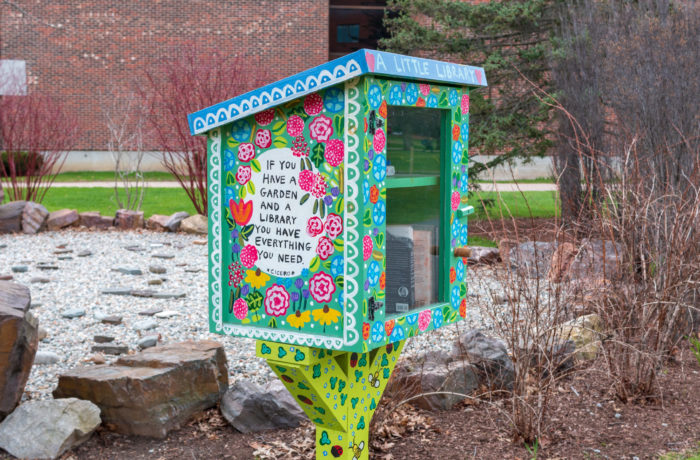Matthew Pramas
Staff Writer
On a brisk fall day, when the foliage is in bloom and the breeze is just right, there is a lonely enchantment about North Campus. The old brick and uneven plaster speak of decades past.
For many students, North Campus is an abandoned spot for underclassmen to park their cars, but for art students like Sarah Carson-McNally, ’20, North Campus is home to Sloan, the base for the Art department. Until recently, St. Michael’s College considered selling the 20 buildings it owns on North Campus, including Sloan, before deciding to only sell the unused buildings.

Unused properties include the Linihan, Hammel, Purtill and Ethan Allen residence halls. A chapel and a theater have been abandoned for many years.
McNally loves Sloan and said, “I love having a space to go and just be up there and away from everything going on at Main Campus and having all those resources to do my work.”
North Campus lies a mile down the road from the College past Camp Johnson. Current seniors can remember the days when North Campus housed students. The completion of Residence Hall 4 in 2016 and decreased enrollment ended North Campus residency.
Jim Farrington, the college’s architect and director of facilities, said the college still owns the properties it purchased following World War II, including maintenance, leased, and abandoned buildings, along with the Early Learning Center (ELC), a daycare for children between 6 weeks and 6 years.
Brian Collier, professor of Fine Arts, said that Sloan is quieter now that students are no longer living on North Campus. “Students who were art majors really liked to live up here,” Collier said from his third floor office, surrounded by his sculptures and installations. “The access to the building was much easier.”
The school once offered routine shuttles between the two campuses and ran from 7:00 a.m. to midnight on weekdays and until 2:00 a.m. during the weekends.
Considering the size and aesthetic of Sloan, Collier said, “Having a building like this is really valuable to allow the creative process to happen, but we would prefer having this same building closer to main campus.”
From the creaky wooden floors and the unconventional floorplan, to the colorful surfaces decorated with chaotic marks of art materials, Sloan captures a sense of creativity unlike anywhere else on campus. Built in 1902, Sloan has a lived-in character creativity and space need from an art building.
McNally said, “It’s totally just a big messy building with paint on the walls and there’s not a lot of people moving through it.”

Both art students and faculty face isolation due to the distance between Main and North Campus, which presents some challenges in Collier’s view. “Our visibility as a program broadly on campus is lower because we’re out here,” he said.
Jordan Douglas, who teaches darkroom photography at Sloan, said that there used to be more interaction between the college’s two campuses, but also said that art students take a high degree of ownership of Sloan.
“The darkroom at Sloan was built in 2003, which is ironic because so many were closing around that time,” Douglas said. The college’s president at the time decided to invest in a darkroom and supplied it with old equipment once used by the photojournalism class.
The appeal of Sloan coincides with the tactile and deliberate nature of darkroom photography, Douglas said. Now that digital photography is no longer a new technology, developing film “feels really rewarding and exciting again,” he said.
Collier and the art department has taken steps to become more visible on Main Campus. “Professor Mentor and I decided it would be really good to showcase current student work in Alliot and change it every year,” Collier said. The next installation is scheduled for Thanksgiving time.
Moreover, Collier took over the art gallery in McCarthy Arts Center and he along with Douglas teach digital arts courses on Main Campus. The Art department also displays installations in Alliot and around campus.
Despite these challenges, Collier is determined to keep art on the minds of students and faculty while Farrington looks to the future of the college’s facilities.
“The main reason we’re selling parts of North Campus this is so that we can have resources that students are going to use,” Farrington said. “I think the center of campus is the future and I think that’s where we have got to put our effort.


